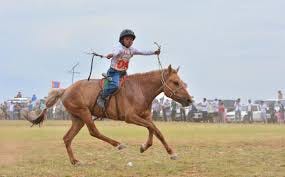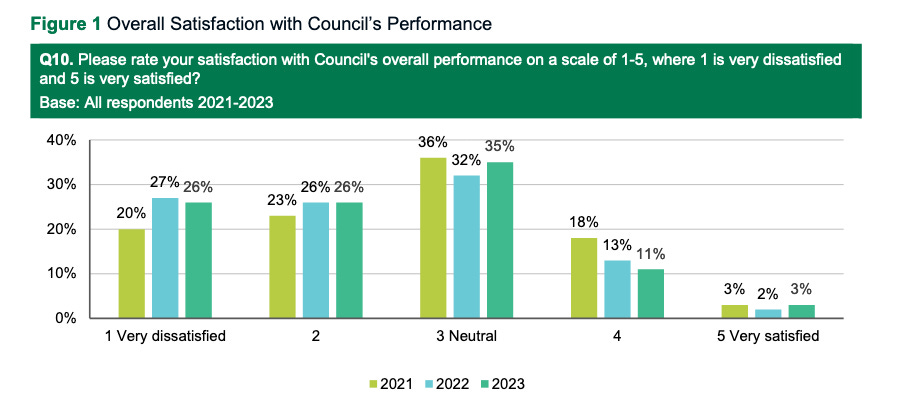Dropping Down Dead Horse Disease and the Local Council Satisfaction Survey - Similarities?
by Reuben Rose
Dropping Down Dead Disease in Mongolian Horses
It’s more than 20 years ago that I was invited to give a series of talks to veterinarians in Mongolia. Mongolia was part of the former Soviet Union on the eastern most part of its extraordinary empire. However, after the fall of the Soviet Union, the Russians left the Mongolians, [who only knew about a handout culture; they had become communists in the early part of the Russian Revolution, around 1920] to their own devices. It was tough but better than being governed from Moscow.
A U.S. veterinarian called me from Mongolia and asked me (as an veterinary horse expert) what I knew about “dropping down dead disease” in horses. I told him immediately that even though I had never heard of “dropping down dead disease” I knew that it was very serious. He must have thought that my response indicated real expertise and so he invited me to come to Mongolia, give some talks to the local veterinarians and participate in the famous Nadaam Festival where horses race more than 20km as one of the “manly sports” - the others being wrestling and archery.
I knew nothing about wresting and archery but I did know something about horses and racing. In fact, I was an international expert and so while I didn’t know about “dropping down dead disease”, I reckoned that I would be able to work it out.
My daughter and I flew to Beijing and then transferred to the recently-established Mongolian Airlines. On board the flight, it was clear that the staff had been given a crash course in “how to be a flight attendant” and they seemed uncertain about many things, including the function of the seat belts. Fortunately, there were no storms and after a short flight, we arrived in the capital of Ulaanbaatar.
The Nadaam Festival where “dropping down dead horse disease” occurred, was due in just a few days and so there was no time to lose. I gathered the local veterinarians, most of whom only spoke Russian, and presented a few days of talks about horse exercise physiology. I realized I may have pitched the talks at the wrong level when during a break for lunch, two veterinary students cut up a recently killed sheep on the operating table at the veterinary clinic for us to eat.
Then I asked what drugs and medicines they had available? One of the professors from the university brought out a large vial with Russian writing on the outside. I asked:
”What does the Russian say?”
His translation
“Caffeine hydrochloride - expiry date 1958!”
I asked if there were any other drugs. The answer was “none”.
At this stage I started to get nervous because although I knew nothing about “dropping down dead horse disease”, I knew that a 20 ml vial of caffeine hydrochloride made in Moscow and which expired in 1958 was unlikely to be an effective treatment.
I talked to the professor of veterinary surgery and found out an amazing thing. The Mongolians had no drugs. They had nothing! They would operate on dogs by injecting them intravenously with Russian vodka but there was a fine line between life and death when administering the vodka and great expertise was necessary. I determined that I wouldn’t use intravenous vodka for “dropping down dead disease” in any case.
Then I had a brainwave, and so I worked out that the Mongolians had salt and we could make up large volumes of saline that could save some of the horses if we gave the fluid intravenously. I had determined that the problem was likely to be severe dehydration and if we could make up 400 litres of fluid, we could give the horses that did have a severe problem around 10-20 litres each. Horses need large volumes of fluid when they become dehydrated and usually you have to determine how many bathtubs of fluid they need.
I gave the veterinarians the formula, told them to make up 400 litres and went off to bed.
The Great Horse Races at the Nadaam Festival
The next day was the Nadaam festival and the veterinary team and I turned up a the finish line of the races to await the first horses completing the race. When I asked about the fluids that I had asked to be made up, there seemed to have been a translation problem. Rather than 400 litres, they had made up 4 litres, hardly enough for one horse!
Figure 1. Boy riding a horse during the Nadaam festival
The first horse, ridden by children as young as three years old, arrived in a lather of sweat and barely alive. Sure enough several of them fell down and quickly died. One horses we gave the 4 litres of fluid to intravenously and he got up and trotted away. I realized that the Mongolian horses were incredibly tough and the children in a fierce competitive spirit, whipped the horses all the way to the finish line. The little Mongolian ponies gave their all then “fell down dead”!
It was a shocking story but gave me the insight necessary to prepare the group with fluids and other materials for the Nadaam Festival the following year and the death rate plummeted.
What Does Falling Down Dead Disease Have in Common with the Local Council?
It’s a good question. I realized at this time in Mongolia that I was dealing with wonderful local people who had suffered prolonged deprivation from being at the extreme reach of the Soviet Union. They had no resources and were dealing with a traditional horse race that had been going on for centuries where the culture was to ride the horses as fast as possible until they stopped. Then they fell down dead!
I thought of the similarities to the local ratepayers today because it is clear that with increasing government requirements, more bureaucratic regulations and an unresponsive culture to the needs of the ratepayers, it would not be long until the ratepayers, figuratively “fall down dead”.
It is worse than Mongolia because the Mongolians, once having identified the issues, gathered resources and over the next few years fixed the “falling down dead disease”. The local council despite survey results showing only a 2-3% of residents were “very satisfied”, have done nothing! The survey results for customer satisfaction over the last three years are shown below.
Figure 2. Results of overall satisfaction with Council’s performance by Snowy Monaro residents
In running for council, it has become evident to me that I have stumbled upon a bureaucratic and unresponsive organization that needs a revolution to bring it up to expectations of the residents. This means dismantling the monlithic structure that is an impediment to communication with residents. Councils need to be returned to smaller units where people know each other and you don’t have to enter an “online portal” any time you want to contact council staff.
Minor surgery under vodka won’t do it. We need Victor Chang, the famous heart transplant surgeon, and his team! (Unfortunately Dr Chang is dead)






Such a great story that mirrors what can happen if we don’t get Back to basics onto council. Thanks for all your hard work. 🙏🏼🙏🏼
Thanks Adrienne. The example is a bit extreme but the Mongolians at least recognized the problem and turned it around. They realized it was no use waiting for Moscow to do something1!